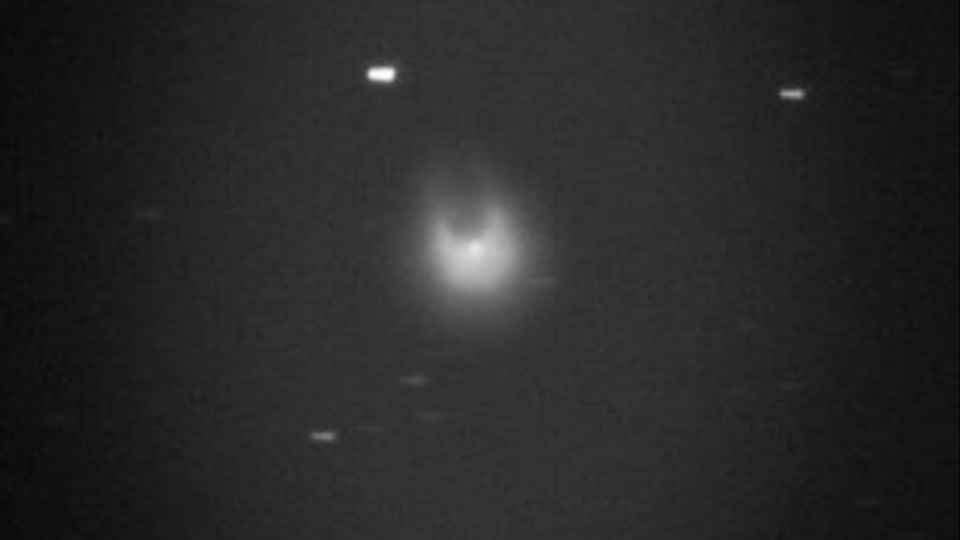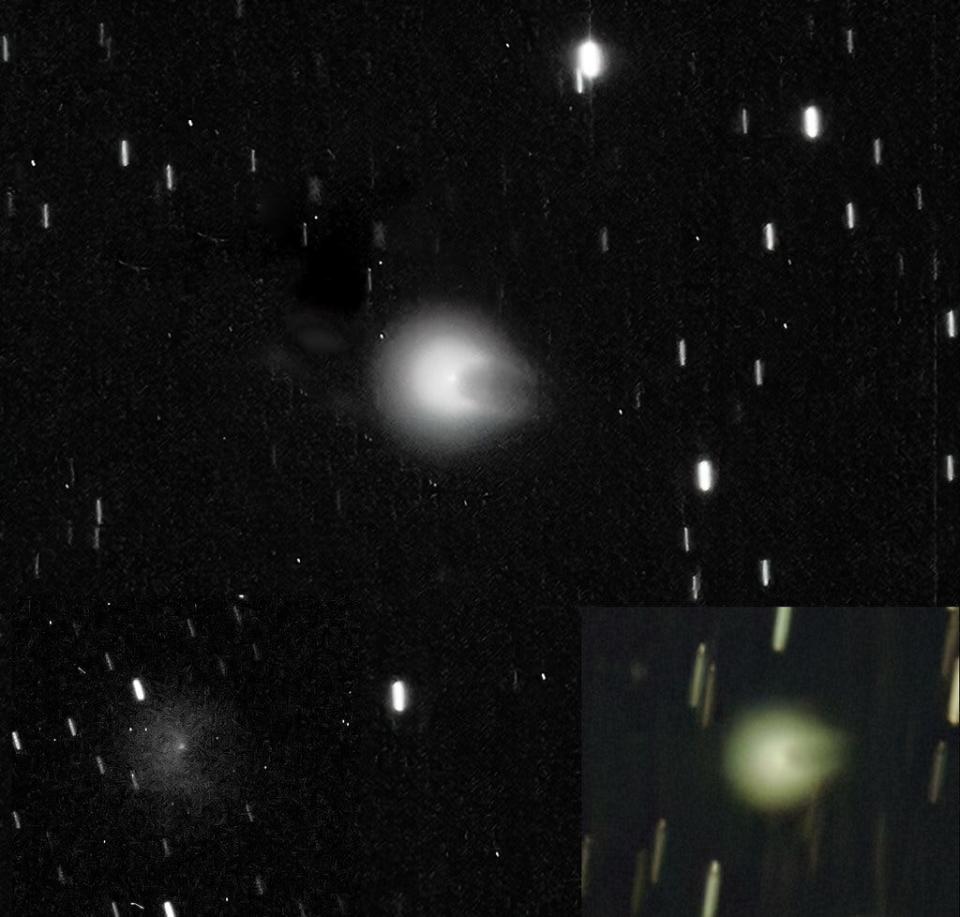Latest on the Devil Comet 2024: Will it be visible during the April total solar eclipse?
A striking celestial event is set to unfold in the night sky throughout April 2024.
A devil comet — an uncommon horned comet officially named Comet 12P/Pons-Brooks — is forecast to make an appearance in the same month as the total solar eclipse.
Sporting a shape reminiscent of the Millennium Falcon spacecraft from "Star Wars," the devil's comet has captivated scientists worldwide with its recent energetic eruptions and infrequent appearance. The devil comet occurs roughly once every 71 years, akin to the renowned Halley's Comet.
The devil comet's perihelion, its closest approach to the sun, is anticipated on April 21, 2024, and the total solar eclipse will grace the sky on April 8.
Here is everything you need to know about the devil comet heading toward Earth, including whether you can see it during the total solar eclipse.

What comet is close to Earth in 2024?
In 2024, several comets will reach their perihelion and peak brightness. The one generating the most attention right now is 12P/Pons-Brooks, also known as the devil comet.
The comet 12P/Pons-Brooks, also known as Comet Pons-Brooks, is expected to be one of the brightest of the year. It's forecast to reach its perihelion on April 21 and its closest approach to Earth will occur on June 2. During its perihelion in April, it may be visible to the naked eye under dark sky conditions.
Comet Pons-Brooks is a Halley-type comet that was observed in 1812 by Jean-Louis Pons and again in 1883 by William Robert Brooks. It has an orbital period of approximately 71 years and is one of the brightest known periodic comets, according to Astronomy.com.
What comet will be visible during the eclipse?
People are wondering whether the devil comet and total solar eclipse will be visible on the same day.
Both celestial events will happen in April but the solar eclipse will happen during the daytime on April 8. Comet 12P/Pons-Brooks is expected to be visible in the night sky for observers in the northern hemisphere on April 21.

When can you see the devils comet?
The devil comet is expected to make its closest approach to the sun on April 21. It will be most visible in the weeks leading up to that date. The comet will approach its closest point to Earth on June 2, passing by at a distance of approximately 144 million miles.
Where will the devil comet be visible in Arizona?
The devils comet will appear in the constellation of Taurus on April 21. It will be best observed in the northern hemisphere, particularly closer to the equator such as in Ecuador, Mexico, Indonesia, Malaysia and Singapore, according to Star Walk.
Arizona, being located at mid-northern latitudes, should offer decent viewing conditions for observing the devil comet.
To see the devil comet in the night sky, choose a location away from light pollution. Look toward the northeastern horizon in the early hours before dawn or the northwestern horizon in the evening after sunset.
Binoculars or a telescope can enhance the experience but the comet should be visible without those. It will likely appear as a small, grayish fuzz to the naked eye.
How big is the comet that's coming in 2024?
Comet 12P/Pons-Brooks is about 18 miles in diameter, according to Space.com, or roughly three times the size of Mount Everest.
Why is it called devil comet?
The nickname comes from an observation made in July 2023 when an explosive outburst from a cryovolcano on the comet's surface resulted in two streams of gas and dust emerging from it, giving the impression of two horns. That led to the name Devil's Comet.
Is the Devil's comet going to hit Earth?
No, there is no indication that Comet 12P/Pons-Brooks is on a collision course with Earth. Astronomers have extensively studied its orbit and trajectory and there is no evidence to suggest that it poses any threat of impact.
Got a story you want to share? Reach out at Tiffany.Acosta@gannett.com. Follow @tiffsario on Instagram.
Support local journalism and subscribe to azcentral.com.
This article originally appeared on Arizona Republic: Devil Comet update: Will it be visible during the 2024 solar eclipse

